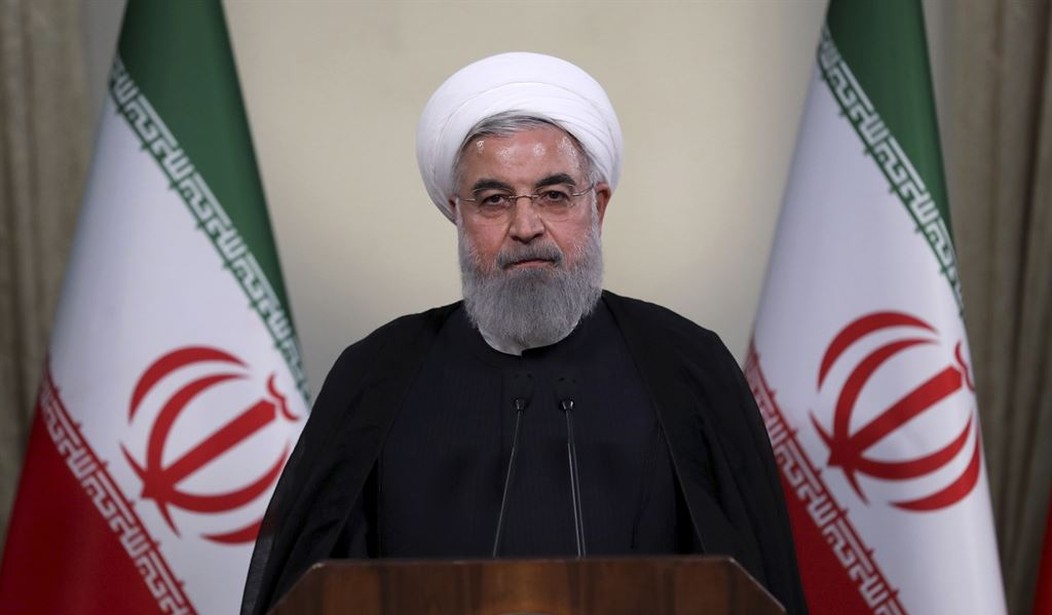Strikes and protests broke out in and around Tehran’s famous and vitally important Bazaar marketplace this week. Consistent with prior protests that have occurred over the past several months, the demonstrations have continued – and even metastasized – in spite of the regime’s best efforts to crack down on the popular expressions of economic and social discontent. In fact, the conditions underlying the current protests are reminiscent of those that broke out in the city of Mashhad at the end of last year, sparking a nationwide uprising that went on for weeks.
It was widely reported that the uprising began with an emphasis on economic indicators like the dramatic drop in the value of Iran’s national currency, the Rial. But the people’s expressions of frustration over a worsening financial situation quickly gave rise to much more far-reaching messages, including explicit calls for a wholesale change of government. The same pattern seems to have emerged in the midst of the Bazaar demonstrations, with many participants even repeating some of the same slogans that characterized the nationwide protests in December and January.
These slogans include calls for the theocratic regime to “let go of Syria” where Tehran has been spending billions of dollars on defending the regime of Bashar al-Assad since the outbreak of civil war in that country more than seven years ago. Since the 1979 revolution, the well-being of the domestic population has taken a backseat to the regime’s efforts to portray itself as a bulwark against Western hegemony and a standard-bearer for Shiite fundamentalism all across the Middle East.
This speaks to the fact that, despite the persistent optimism of some Western policymakers, the regime is unlikely to moderate on its own accord. The Iranian people overwhelmingly understand this reality, as evidenced by the close overlap between their economic protests and the ever-growing calls for regime change. The popularity of that message is underscored by the fact that the current protest in the Tehran Bazaar is by no means an isolated incident in terms of its relationships to the uprising that started the year 2018.
Recommended
In March, as Iranians throughout the world were celebrating the Persian New Year holiday known as Nowruz, the Iranian opposition leader Maryam Rajavi issued a statement in which she applauded the efforts of those who had protested through much of January, and then promised that the year ahead would be “a year full of uprisings” leading to “final victory” over the clerical regime. The accuracy of that prediction was immediately apparent as the nation’s activist community quickly expanded its already vigorous efforts in many areas.
Those subsequent protests have exploited the cracks forming in the regime’s repressive infrastructure. It is a process that has been helped along by an appropriate shift in Western policy toward more economic and diplomatic pressure, especially targeting the IRGC and its affiliates. The simultaneous pressures from inside and outside Iranian society contributed to a situation in which participants in a trucking strike earlier in June were able to directly confront scabs affiliated with the IRGC, obstructing and unloading their vehicles and thereby dealing a significant blow to the prestige of the regime’s hardline paramilitary.
There is good reason to believe that the current protests will continue the trend of allowing the people’s power to overtake that of the repressive and deeply unpopular clerical regime. The extent of the people’s power is something that has been drastically underestimated by Western leaders and much of the world, thanks in large part to Tehran’s aggressive propaganda, which insists that there is no organized opposition to the existing regime, much less a viable democratic alternative.
If the falsity of this claim is not made clear by the persistence of highly organized protests with credible and highly significant demands, then it will surely be made clear when the Iranian Resistance presents itself to the world at the latest rally organized by supporters of the National Council of Resistance of Iran (NCRI). That event will feature a keynote speech by Maryam Rajavi, and may outline her predictions of a “final victory” in the wake of the nation’s escalating protests.
On the eve of the gathering, more than 30 former senior U.S. officials and dignitaries voiced their support for Maryam Rajavi’s 10-point Plan for the future of Iran in a public statement and declared, “Our delegation is going to Paris this year to support the NCRI, firmly believing that the current regime is vulnerable to the popular movement seeking an end to tyranny and corruption.“
If there was ever a time when global policymakers could afford to be dismissive of the aspirations of the Iranian people and the global outcry against the regime, this is not it. The massive, unrelenting, and geographically – as well as demographically – diverse demonstrations against the theocratic dictatorship make Rajavi’s predictions not only possible but also likely.
The end of the Iranian regime may be close at hand and it is therefor more important than ever to listen to the voices of Iranian dissidents and expatriates who have given much thought to the question of what comes next for their homeland.
























Join the conversation as a VIP Member